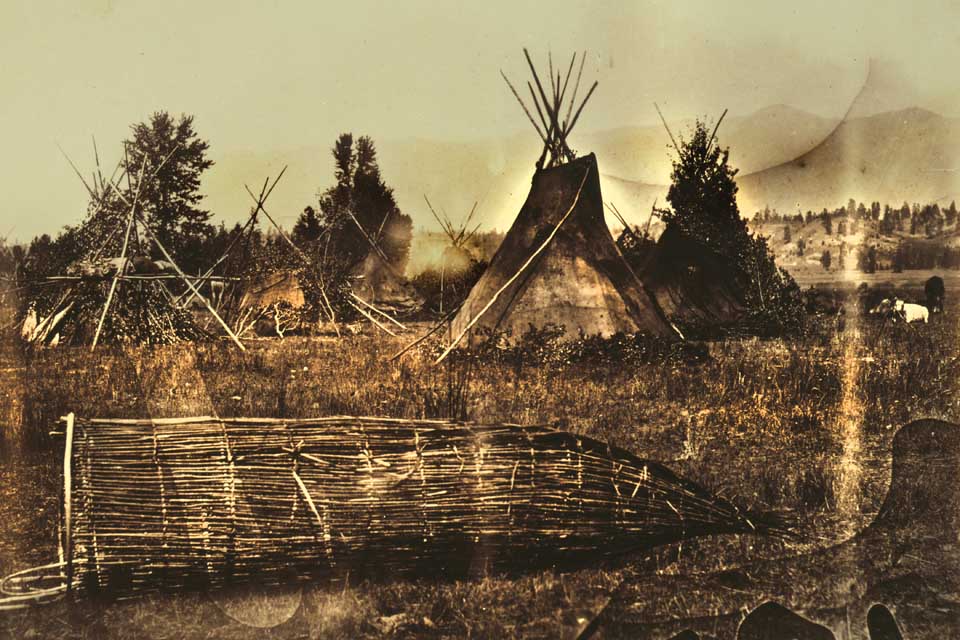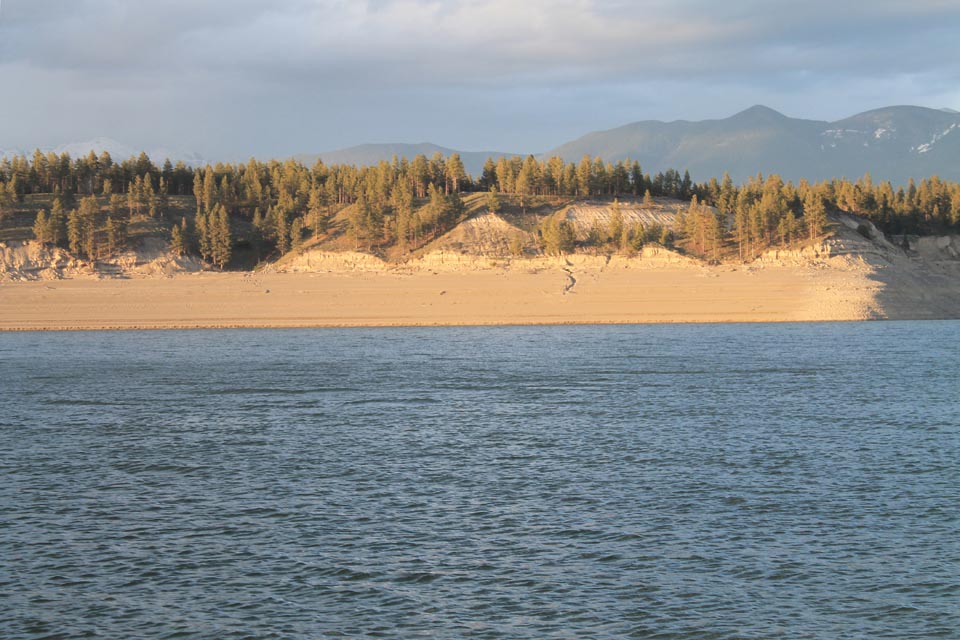David Thompson at Tobacco Plains on the Kootenai River, Spring 1808
After wintering at Kootenay House (near Invermere British Columbia), on April 20th, 1808 David Thompson left on a trip to explore the Kootenay River and reach the homeland of the “Lake Indians”, allies of the Kootenai that lived further south and west. They canoed southwards to Columbia Lake, headwaters of the its namesake river, then portaged across to the Kootenay. From here they paddled rapidly downstream and southwards reaching on April 25th an area with “Beautiful Meadows on both Hands, even to the very Mountains on the left….This is Place where the Indians speak so much of growing their Tobacco, & we named on that account the Tobacco Meadows.” 1 From here a main trail led southwards towards Flathead Lake, and the Camas Meadows near the confluence of the Flathead and Clark Fork rivers. Thompson waited several days for a planned meeting with Kootenais to trade for their harvest of furs. His voyageurs trapped along the Tobacco River, and Thompson looked for a site for a future trading post, and continued to marvel at the location: “Perhaps the whole North West cannot show such charming romantic scenery, decorated with such verdant meadows and fine open woods and the beaver are in many places in tolerable plenty, especially at the Fine Meadow river.” 2 Several days later, when the Kootenais had not arrived due to an altercation with the Piegan, Thompson continued his trip southwards down the Kootenai, eventually reaching Kootenay (Flatbow) Lake on the lower reaches of the river. He then returned to Kootenay House to ferry furs across the continental divide and down the Saskatchewan River during the summer, pick up more trading supplies at Rainy Bay. Thompson returned to Kootenay House by mid-November. He wintered there until late April, collecting furs from Indians and free trappers working both the Kootenay and Columbia valleys.
After taking the winter’s haul back across the divide and picking up another year’s supply of trade goods at Fort Augustus (near Edmonton), Thompson was again on headwaters of the Columbia by early August, 1809. This year the plan was to close Kootenai House, and move southwards to a new post to more centrally trade with the Kootenais, but also the Pend Orielle, Kalispel, and Flatheads. Further, one of Thompson’s major goals in moving the trading post was to reduce conflict with the Piegans. The North West Company’s trade of guns with the First Nations to the west had resulted in many Piegan being killed in battles, and the Blackfoot confederacy was now very aggressively trying to stop the trade, and routinely sending raiding parties west on “War Roads” to intercept fur trade brigades. In fact, as soon as Thompson returned to the Columbia valley that summer, one of Jaco Findlay’s relatives “informed us that Jaco & all his family had been robbed of all their horses & the major part of their property by a Band of Peagans 14 days ago.” Thompson soon met Findlay, and lent him horses so that he and his family could eventually follow the brigade as it travelled south 3
On August 24 as he rapidly canoed south on the Kootenai River, Thompson again reached the Tobacco Plains “where we staid near three Hours while two of us went to look how the garden of Seeds that were sowed in the Spring had thriven.” Earlier that spring he had ordered his trappers to plant a garden here, but it had not done well. The trader continued southwards to establish trading posts on Lake Pend Orielle (Kullyspel House), and further up the Clark Fork River near today’s Thompson’s Falls (Saleesh House). 4
Tobacco Plains has long been an activity centre for the Kootenai or Ktunaxa peoples. Known as Akan’kunik, or “the place of the flying head,” traditional knowledge places the the “Big Village” or ancient capital of the Ktunaxa here. 5 Its location on the western slopes at a low elevation on the bottomlands of the Kootenai River provided an excellent wintering location, and opportunities for planting and gathering tobacco and other plants, fishing and hunting. The fish trap in the 1861 photograph was likely seasonally placed in the Tobacco River. The plains were also a central location for native people moving on the river by canoe, or on trails crossing the Rocky Mountains connecting to the bison hunting grounds on the eastern slopes. During the latter years of the fur trade period, Jesuit missionaries regularly visited the Kootenai living here, and in the spring of 1857 the Kootenai constructed a chapel near Fort Kootenai, a seasonally operated Hudson Bay Company Post on the Tobacco Plains (see photograph). 6 Although the United States government moved Kootenai peoples to a large reserve near Flathead Lake, members of the First Nation still hold reserve lands nearby in Canada near the small community of Grasmere, British Columbia.
- Belyea, B., ed. Columbia Journals: David Thompson. Montreal and Kingston: McGill-Queen’s University Press, 1994, p. 79. ↩
- D. Thompson, Notebook 19, Archives of Ontario, quoted by Nisbet, J. The Mapmaker’s Eye: David Thompson on the Columbia Plateau. Pullman, WA: Washington State University Press. 2005, p. 58 ↩
- Nisbet, Mapmaker’s Eye, p. 71. ↩
- Belyea, Columbia Journals: p. 105 ↩
- http://www.tobaccoplains.org/aboutus.html ↩
- Johnson, Olga Weydemeyer, ed. The Story of the Tobacco Plains Country. Caldwell, ID: Caxton Printers, 1950, 12-14, http://www.foresthistory.org/ASPNET/Publications/region/1/flathead/chap1.htm ↩

